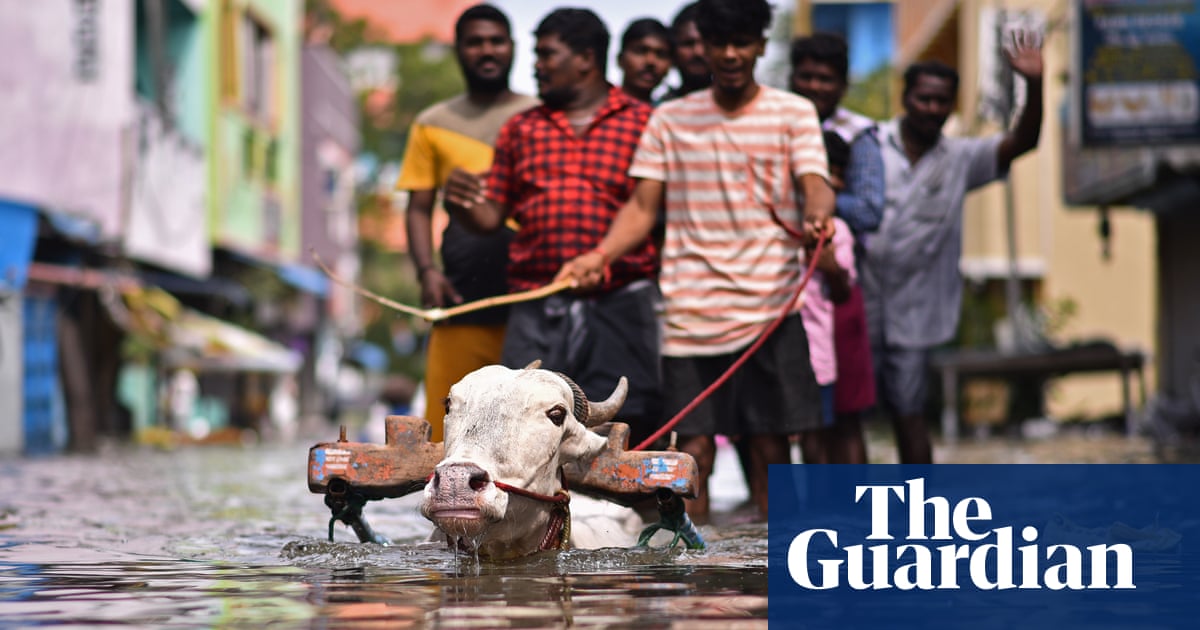Swiss mining company Glencore has been on the offensive over its controversial plans to try to inject carbon dioxide into a section of the Great Artesian Basin (GAB) â one of the worldâs biggest underground water sources and a lifeblood for farmers and regional towns.
Later this month, the Queensland government is expected to decide if it will allow Glencoreâs pilot carbon storage project to go ahead.
Glencoreâs proposal has brought together unusual bedfellows in furious opposition to the plans â from farming and conservation groups to billionaire mining magnate Gina Rinehartâs agriculture business and One Nation and the Greens.
Queensland agricultural body AgForce is running a campaign against the plans, saying they will put the the GAB at risk, and has gone to court to try to force the federal government to fully assess the project under national environment laws (the decision not to assess the project was made by the previous Coalition government).
In the Senate, the Greens and the Coalition voted in favour of a One Nation-backed Senate inquiry into the plans. Queenslandâs premier, Steven Miles, reportedly said on Wednesday he did not expect the project to pass the stateâs environmental test.
Whatâs going on here?
Letâs start with whatâs being proposed.
Glencoreâs CTSCo project wants to inject about 110,000 tonnes of carbon dioxide each year for three years into an aquifer known as the Precipice Sandstone, which is more than two kilometres below ground in southern Queensland.
The liquified CO2 will be trucked 260km from the Millmerran coal power station where there is a proposed trial to capture some CO2 from the plant.
But Glencore says any emissions reductions from the project are âincidentalâ.
Rather, the aim of the project is, according to Glencore documents, to evaluate the âfeasibility of future large-scale [greenhouse gas] stream storage within the Surat Basinâ. Glencore has said the project is a âfirst stepâ towards a âlarge CO2 storage hub in Queensland suitable for multiple industrial users,â and has acknowledged it would need to go through a fresh approvals process.
But how big could a future project be, compared with the 330,000 tonnes it wants to store for this trial?
The company wrote last month in its finalised environmental impact statement that the Precipice Sandstone aquifer could store between 183m tonnes and 730m tonnes of carbon dioxide, âindicating its potential for a safe and cost-effective permanent CO2 storage at potential future industrial scaleâ.
That suggests a project that, in terms of CO2 injection, would be between 560 and 2,200 times larger than the trial.
Glencore said in a statement: âThe numbers you have quoted are storage capacity estimations only and have no direct relationship to any future storage projects.â
Independently backed?
Glencore and its supporters have said repeatedly the project âhas been reviewed by expert third-party institutions, including the Australian Government Independent Expert Scientific Committee (IESC), the Office of Groundwater Impact Assessment (OGIA) and CSIRO who concluded that the impacts would be local and minor.â
Only one of those three named reviews â from the IESC â are publicly available, but Temperature Check has obtained copies of the other two.
The IESC did say impacts were âexpected to be minimal and manageable in both the immediate and long termâ because the trial was small.
But the report also contained several criticisms. For example, the committee wrote it was ânot possible to be certain of the adequacy of the regional groundwater and plume migration modelsâ because of a lack of documentation.
Elsewhere the committee said the predicted changes to the acidity of the groundwater from adding the CO2 could lead to âmobilisation of metalsâ that could âlimit the future usability of the groundwaterâ.
The CSIRO review identified several major issues with Glencoreâs environmental assessment, at one point saying âa key weakness of the EIS [environmental impact statement] is that risks are not identified and presented in a structured wayâ.
The review also said: âThe limited sensitivity and uncertainty analysis mean that potential impacts on water users in the Precipice Sandstone aquifer due to new groundwater extraction near the GHG stream injection well cannot be ruled out.â
after newsletter promotion
Temperature Check asked CSIRO if Glencoreâs summary of its review was fair. A spokesperson said: âOur report will be made publicly available when the Queensland government publishes its assessment report on the project. We expect this to be towards the end of May. We will be happy to discuss our report details and the nuances of our findings after this.â
Ned Hamer, an independent hydrogeologist who has looked in detail at Glencoreâs plans, has read the three reports and said ânone of these parties were able to âconcludeâ anything due to the inadequate impact assessment and particularly seriously deficient modelling undertaken by CTSCo to dateâ.
In a statement, Glencore claimed âall the expert reviewer concerns have now been addressed and recommendations adopted and incorporated in the final EISâ and so its description of âlocal and minorâ was appropriate.
In a previous response to Agforceâs case in the federal court, Glencore has said it would welcome a hearing, where âmisleading rhetoric will be shown for what it is and measured against Glencoreâs extensive scientific evidenceâ.
Rinehartâs Hancock Agriculture wrote in a Senate submission that its investigation found the risks of the project to agriculture were unacceptable ânot just to our own operations, but more broadly, including long-term water supplies and feedlot securityâ. It wrote that the plan should be blocked.
Non-potable?
Glencore has also claimed the aquifer âcontains non-potable water with fluoride levels six times above the safe drinking level and is not used by any agricultural producer within a 50km radius.â
But Hamer said: âItâs good quality stock water and a number of local councils would be very happy to have this quality of water available for town drinking where it would be amended or treated.
âPoorer quality GAB groundwater is used for many town drinking supplies. The water sometimes requires amendment or treatment which is not overly restrictive given the high-value use.â
He said it was common for GAB water to have fluoride levels above drinking guidelines but âthe extensive experience of farmers in the GAB is that elevated fluoride levels in water donât affect animal healthâ.
Rejection a âdeath knellâ for CCS?
In the Australian, one Glencore spokesperson said if the project was refused it would be the âdeath knell for any future onshore CCS projects in Australiaâ.
But the reason so many groups are concerned about Glencoreâs project is not because it is âonshoreâ but because it is targeting an aquifer that is part of the Great Artesian Basin. According to Hamer, CTSCo is the only project in the world proposing to store CO2 in a water resource.
Carbon capture and storage research group CO2CRC, funded by industry and government, tracks current and proposed CCS projects around the country. Their latest map of 18 CCS projects (only one is operating) shows Glencoreâs is the only one to target a Great Artesian Basin aquifer.
There are two other CCS projects in the southern Queensland and northern South Australia region.
One is Santosâs Moomba project, which is under construction and is expecting to store CO2 in former oil and gas reservoirs.
Another is from oil company Bridgeport, which has proposed injecting 960,000 tonnes of CO2 into one of their depleted oilfields in order to push out an extra 6.4m barrels of oil.









